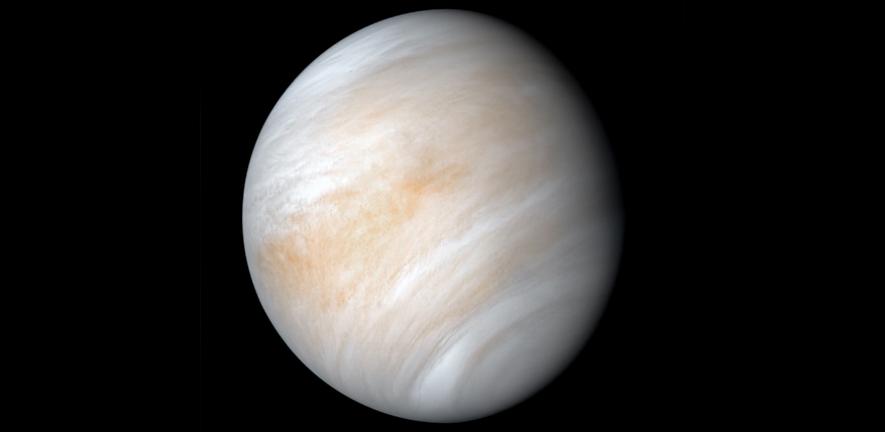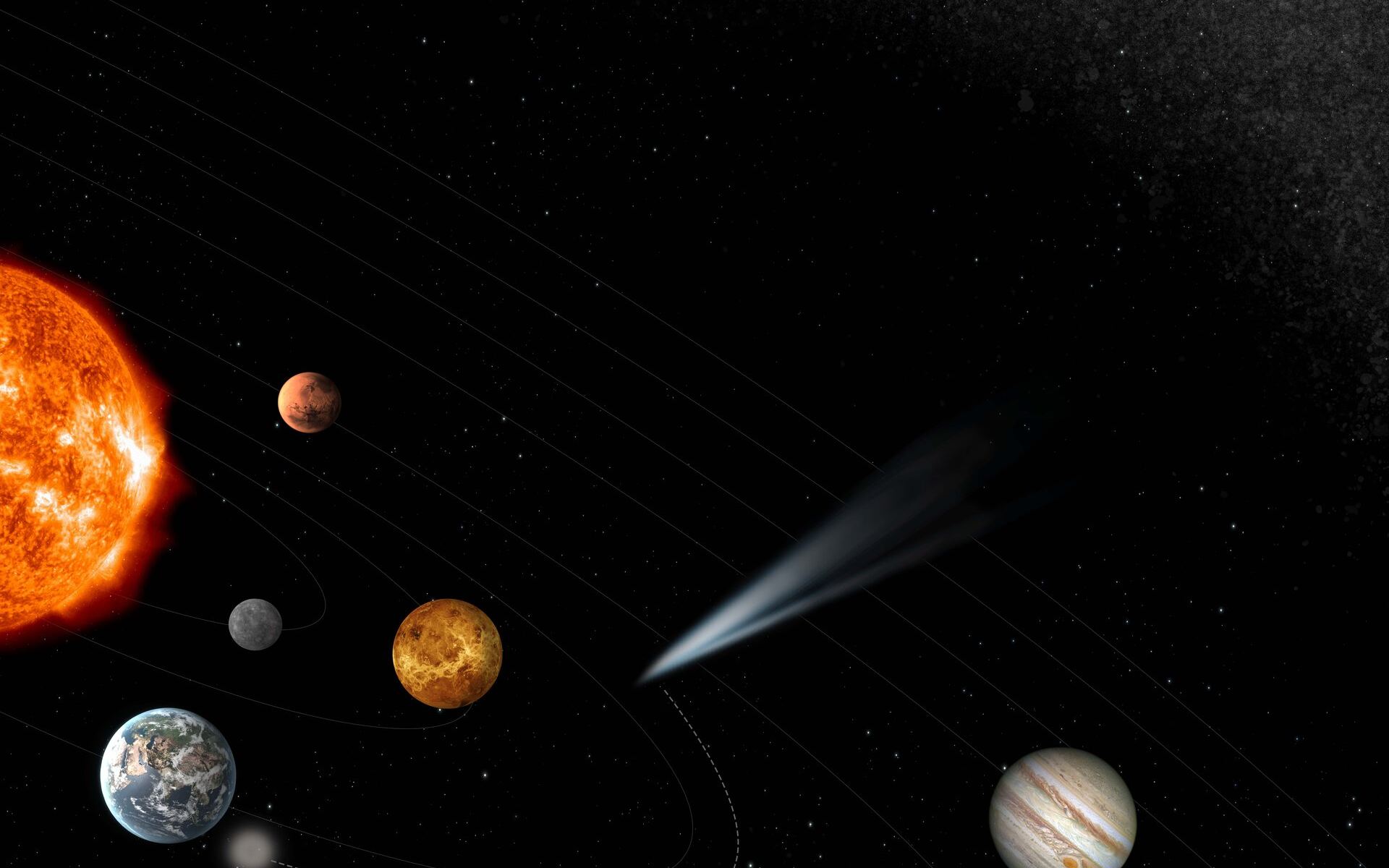The planet Venus is one of the most inexplainable and mysterious planetary objects in our solar system as its surface is beyond inhospitable for us fragile humans with temperatures at a searing 475 degrees Celsius (900 degrees Fahrenheit) and surface pressures more than 90 times that of Earth. However, its atmosphere is quite a different story as its temperature varies considerably ranging from -143 degrees Celsius (-226 degrees Fahrenheit) at night to 37 degrees Celsius (98 degrees Fahrenheit) in the daytime, and varies based on altitude, as well.
Continue reading “High Altitude Life Can’t Explain the Trace Gases in Venus’ Atmosphere”ESA Gives Green Light on its Comet Interceptor Mission
Comets, with their long, beautiful, bright tails of ice, are some of the most spectacular sightings in the night sky. This was most apparent when Comet NEOWISE passed by Earth in the summer of 2020, dazzling viewers from all over the planet while being mainly visible in the northern hemisphere. Even though the sky might look the same night after night, comets are a humble reminder that the universe is a very active and beautiful place.
Continue reading “ESA Gives Green Light on its Comet Interceptor Mission”Titan’s Atmosphere Has All the Ingredients For Life. But Not Life as We Know It
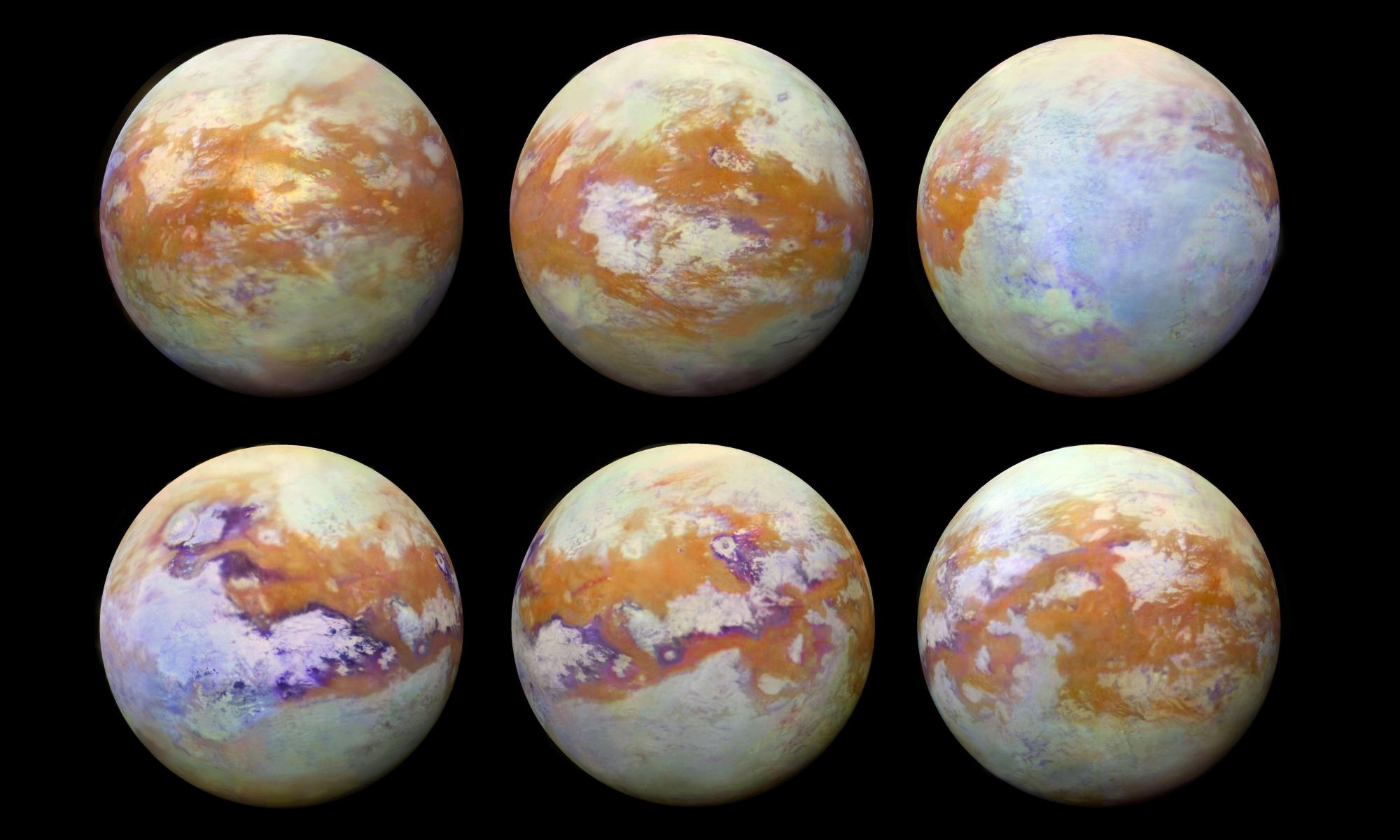
Using the Atacama Large Millimeter/submillimeter Array (ALMA), a team of scientists has identified a mysterious molecule in Titan’s atmosphere. It’s called cyclopropenylidene (C3H2), a simple carbon-based compound that has never been seen in an atmosphere before. According to the team’s study published in The Astronomical Journal, this molecule could be a precursor to more complex compounds that could indicate possible life on Titan.
Similarly, Dr. Catherine Neish of the University of Western Ontario’s Institute for Earth and Space Exploration (Western Space) and her colleagues in the European Space Agency (ESA) found that Titan has other chemicals that could be the ingredients for exotic life forms. In their study, which appeared in Astronomy & Astrophysics, they present Cassini mission data that revealed the composition of impact craters on Titan’s surface.
Continue reading “Titan’s Atmosphere Has All the Ingredients For Life. But Not Life as We Know It”NASA Voyager Probes Still Going Strong After 40 Years

Forty years ago, the Voyager 1 and 2 missions began their journey from Earth to become the farthest-reaching missions in history. In the course of their missions, the two probes spent the next two decades sailing past the gas giants of Jupiter and Saturn. And while Voyager 1 then ventured into the outer Solar System, Voyager 2 swung by Uranus and Neptune, becoming the first and only probe in history to explore these worlds.
This summer, the probes will be marking the fortieth anniversary of their launch – on September 5th and August 20th, respectively. Despite having traveled for so long and reaching such considerable distances from Earth, the probes are still in contact with NASA and sending back valuable data. So in addition to being the most distant missions from Earth, they are the longest-running mission in history.
In addition to their distance and longevity, the Voyager spacecraft have also set numerous other records for robotic space missions. For example, in 2012, the Voyager 1 probe became the first and only spacecraft to have entered interstellar space. Voyage 2, meanwhile, is the only probe that has explored all four of the Solar System’s gas/ice giants – Jupiter, Saturn, Uranus and Neptune.
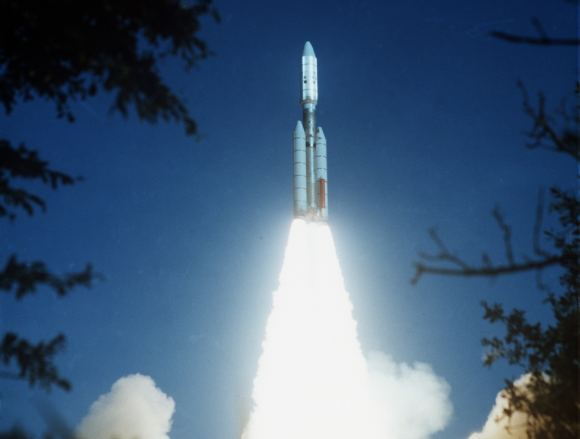
Their discoveries also include the first active volcanoes beyond Earth – on Jupiter’s moon Io – the first evidence of a possible subsurface ocean on Europa, the dense atmosphere around Titan (the only body beyond Earth with a dense, nitrogen-rich atmosphere), the craggy surface of Uranus’ “Frankenstein Moon” Miranda, and the ice plume geysers of Neptune’s largest moon, Triton.
These accomplishments have had immeasurable benefits for planetary science, astronomy and space exploration. They’ve also paved the way for future missions, such as the Galileo and Juno probes, the Cassini-Huygens mission, and the New Horizons spacecraft. As Thomas Zurbuchen, the associate administrator for NASA’s Science Mission Directorate (SMD), said in a recent press statement:
“I believe that few missions can ever match the achievements of the Voyager spacecraft during their four decades of exploration. They have educated us to the unknown wonders of the universe and truly inspired humanity to continue to explore our solar system and beyond.”
But what is perhaps most memorable about the Voyager missions is the special cargo they carry. Each spacecraft carries what is known as the Golden Record, a collection of sounds, pictures and messages that tell of Earth, human history and culture. These records were intended to serve as a sort of time capsule and/or message to any civilizations that retrieved them, should they ever be recovered.
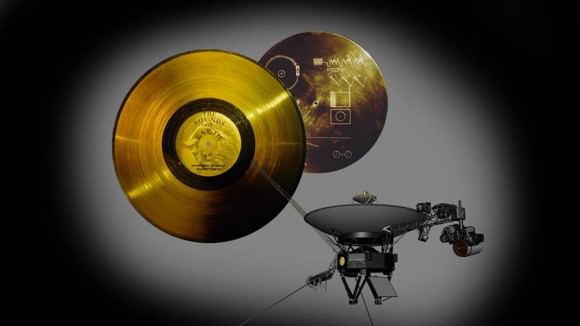
As noted, both ships are still in contact with NASA and sending back mission data. The Voyager 1 probe, as of the writing of this article, is about 20.9 billion km (13 billion mi; 140 AU) from Earth. As it travels northward out of the plane of the planets and into interstellar space, the probe continues to send back information about cosmic rays – which are about four times as abundant in interstellar space than around Earth.
From this, researchers have learned that the heliosphere – the region that contains the Solar System’s planets and solar wind – acts as a sort of radiation shield. Much in the say that Earth’s magnetic field protects us from solar wind (which would otherwise strip away our atmosphere), the heliopause protects the Solar planets from atomic nuclei that travel at close to the speed of light.
Voyager 2, meanwhile, is currently about 17.7 billion km (11 billion mi; 114.3 AU) from Earth. It is traveling south out of the plane of the planets, and is expected to enter interstellar space in a few years. And much like Voyager 1, it is also studying how the heliosphere interacts with the surroundings interstellar medium, using a suite of instruments that measure charged particles, magnetic fields, radio waves and solar wind plasma.
Once Voyager 2 crosses into interstellar space, both probes will be able to sample the medium from two different locations simultaneously. This is expected to tell us much about the magnetic environment that encapsulates our system, and will perhaps teach us more about the history and formation of the Solar System. On top of that, it will let us know what kinds of hazards a possible interstellar mission will have to contend with.
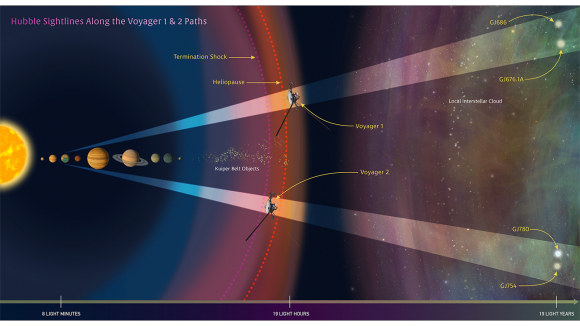
The fact that the two probes are still active after all this time is nothing short of amazing. As Edward Stone – the David Morrisroe Professor of Physics at Caltech, the former VP and Director of NASA’s Jet Propulsion Laboratory, and the Voyager project scientist – said:
“None of us knew, when we launched 40 years ago, that anything would still be working, and continuing on this pioneering journey. The most exciting thing they find in the next five years is likely to be something that we didn’t know was out there to be discovered.”
Keeping the probes going has also been a challenge since the amount of power they generate decreases at a rate of about four watts per year. This has required that engineers learn how to operate the twin spacecraft with ever-decreasing amounts of power, which has forced them to consult documents that are decades old in order to understand the probes’ software and command functions.
Luckily, it has also given former NASA engineers who worked on the Voyager probes the opportunity to offer their experience and expertise. At present, the team that is operating the spacecraft estimate that the probes will run out of power by 2030. However, they will continue to drift along their trajectories long after they do so, traveling at a speed of 48,280 km per hour (30,000 mph) and covering a single AU every 126 days.
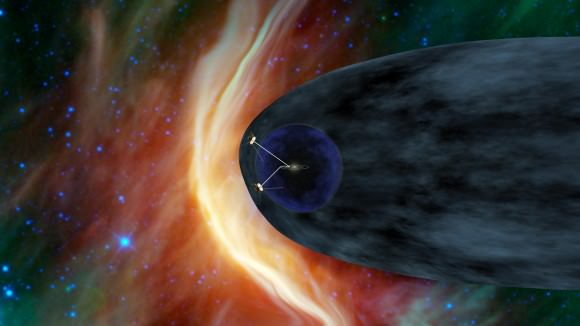
At this rate, they will be within spitting distance of the nearest star in about 40,000 years, and will have completed an orbit of the Milky Way within 225 million years. So its entirely possible that someday, the Golden Records will find their way to a species capable of understanding what they represent. Then again, they might find their way back to Earth someday, informing our distant, distant relatives about life in the 20th century.
And if the craft avoid any catastrophic collisions and can survive in the interstellar medium of space, it is likely that they will continue to be emissaries for humanity long after humanity is dead. It’s good to leave something behind!
Further Reading: NASA
Earth’s Twisted Sister: How Will We Reveal Venus’ Secrets?

Venus is known as Earth’s Sister Planet. It’s roughly the same size and mass as Earth, it’s our closest planetary neighbor, and Venus and Earth grew up together.
When you grow up with something, and it’s always been there, you kind of take it for granted. As a species, we occasionally glance over at Venus and go “Huh. Look at Venus.” Mars, exotic exoplanets in distant solar systems, and the strange gas giants and their moons in our own Solar System attract much more of our attention.
If a distant civilization searched our Solar System for potentially habitable planets, using the same criteria we do, then Venus would be front page news for them. It’s on the edge of the habitable zone and it has an atmosphere. But we know better. Venus is a hellish world, hot enough to melt lead, with crushing atmospheric pressure and acid rain falling from the sky. Even so, Venus still holds secrets we need to reveal.
Chief among those secrets is, “Why did Venus develop so differently?
Conditions on Venus pose unique challenges. The history of Venus exploration is littered with melted Soviet Venera Landers. Orbital probes like Pioneer 12 and Magellan have had more success recently, but Venus’ dense atmosphere still limits their effectiveness. Advances in materials, and especially in electronic circuitry that can withstand Venus’ heat, have buoyed our hopes of exploring the surface of Venus in greater detail.
At the Planetary Science Vision 2050 Workshop 2017, put on by the Lunar and Planetary Institute (LPI) a team from the Southwest Research Institute (SWRI) examined the future of Venus exploration. The team was led by James Cutts from JPL.
The group acknowledged several over-arching questions we have about Venus:
- How can we understand the atmospheric formation, evolution, and climate history?
- How can we determine the evolution of the surface and interior?
- How can we understand the nature of interior-surface-atmosphere interactions over time, including whether liquid water was ever present?
Since the Vision 2050 Workshop is all about the next 50 years, Cutts and his team looked at the challenges posed by Venus’ unique conditions, and how they could answer questions in the near-term, mid-term, and long-term.
Near Term Exploration (Present to 2019)
Near-Term goals for the exploration of Venus include improved remote-sensing from orbital probes. This will tell us more about the gravity and topography of Venus. Improved radar imaging and infrared imaging will fill in more blanks. The team also promoted the idea of a sustained aerial platform, a deep probe, and a short duration lander. Multiple probes/dropsondes are also part of the plan.
Dropsondes are small devices that are released into the atmosphere to measure winds, temperature, and humidity. They’re used on Earth to understand the weather, and extreme phenomena like hurricanes, and can fulfill the same purpose at Venus.
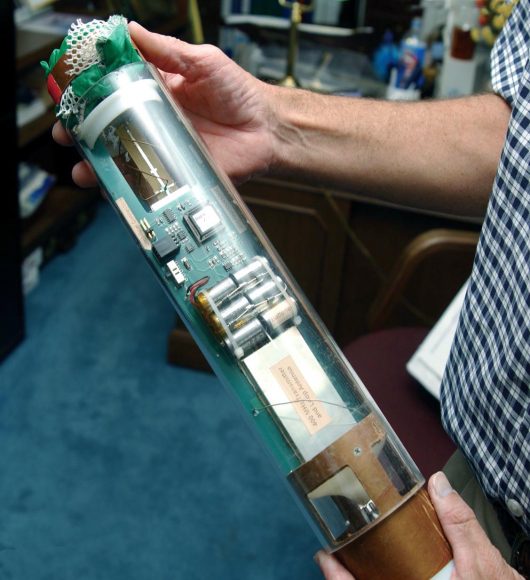
In the near-term, missions whose final destination is not Venus can also answer questions. Fly-bys by craft such as Bepi-Colombo, Solar Probe Plus, and the Solar Orbiter missions can give us good information on their way to Mercury and the Sun respectively. These missions will launch in 2018.
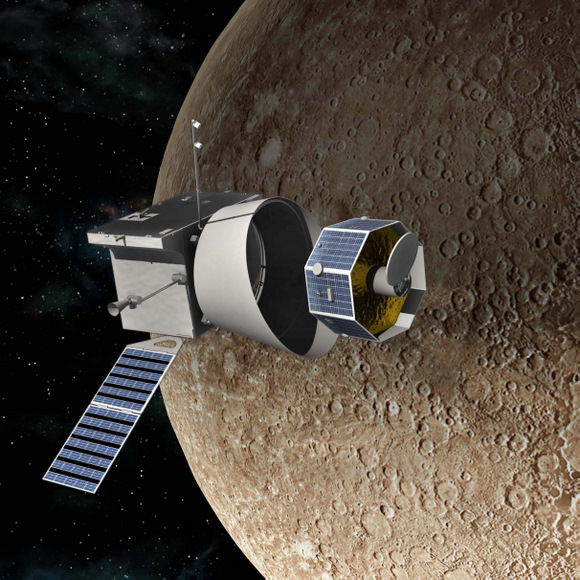
The ESO’s Venus Express and Japan’s Akatsuki, (Venus Climate Orbiter), have studied Venus’ climate in detail, especially its chemistry and the interactions between the atmosphere and the surface. Venus Express ended in 2015, while Akatsuki is still there.
Mid-Term Exploration (2020-2024)
The mid-term goals are more ambitious. They include a long-term lander to study Venus’ geophysical properties, a short-duration tessera lander, and two balloons.
The tesserae lander would land in a type of terrain found on Venus known as tesserae. We think that at one time, Venus had liquid water on it. The fundamental evidence for this may lie in the tesserae regions, but the terrain is extremely rough. A short duration lander that could land and operate in the tesserae regions would help us answer Venus’ liquid water question.
Thanks to the continued development of heat-hardy electronics, a long-term duration lander (months or more) is becoming more feasible in the mid-term. Ideally, any long-term mobile lander would be able to travel tens to hundreds of kilometers, in order to acquire a regional sample of Venus’ surface. This is the only way to take geochemistry and mineralogy measurements at multiple sites.
On Mars the landers are solar-powered. Venus’ thick atmosphere makes that impossible. But the same dense atmosphere that prohibits solar power might offer another solution: a sail-powered rover. Old-fashioned sail power might hold the key to moving around on the surface of Venus. Because the atmosphere is so dense, only a small sail would be necessary.
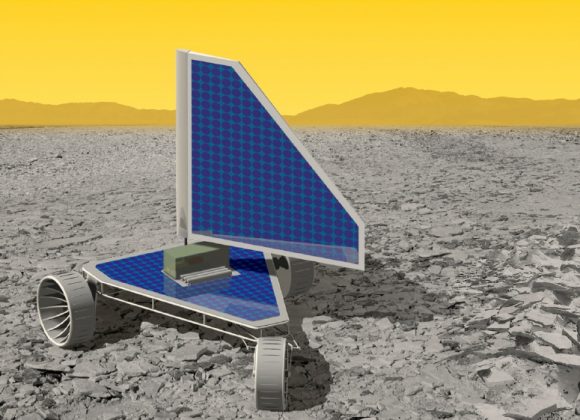
Long-Term Exploration (2025 and Beyond)
The long-term goals from Cutts and his team are where things get really interesting. A long-lived surface rover is still on the list, or possibly a near-surface craft like a balloon. Also on there is a long-lived seismic network.
A seismic network would really start to reveal the secrets behind Venus’ geophysical life. Whereas a lander would give us estimates of seismic activity, they would be crude compared to what a network of seismic sensors would reveal about Venus’ inner workings. A more thorough understanding of quake mechanisms and locations would really get the theorists buzzing. But it’s the final thing on the list that would be the end-goal. A sample-return mission.
We’re getting good at in situ measurements on other worlds. But for Venus, and for all the other worlds we have visited or want to visit, a sample return is the holy grail. The Apollo missions brought back hundreds of kilograms of lunar samples. Other sample-return missions have been sent to Phobos, which failed, and to asteroids, with varying degrees of success.
Subjecting a sample to the kind of deep analysis that can only be done on labs here on Earth is the end-game. We can keep analyzing samples as we develop new technologies to examine them with. Science is iterative, after all.
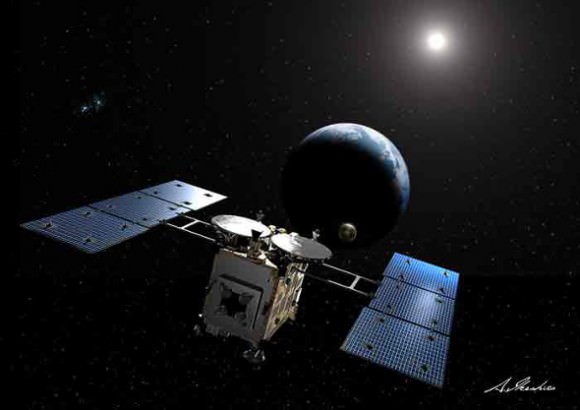
The 2003 Planetary Science Decadal Survey identified the importance of a sample return mission to Venus’ atmosphere. A balloon would float aloft in the clouds, and an ascending rocket would launch a collected sample back to Earth. According to Cutts and his team, this kind of sample-return mission could act as a stepping stone to a surface sample mission.
A surface sample would likely be the pinnacle of achievement when it comes to understanding Venus. But like most of the proposed goals for Venus, we’ll have to wait awhile.
The Changing Future
Cutts and the team acknowledge that the technology to enable exploration of Venus is in flux. No more missions to Venus are planned before 2020. There’ve been proposals for things like sail powered landers, but we’re not there yet. We’re developing heat-resistant electronics, but so far they’re very simple. There’s a lot of work to do.
On the other hand, some things may happen sooner. It may turn out that we can learn about Venusian seismic activity from balloon-borne or orbital sensors. The team says that “Due to strong mechanical coupling between the atmosphere and ground, seismic waves are launched into the atmosphere, where they may be detected by infrasound on a balloon or infrared or ultraviolet signatures from orbit.” That’s thanks to Venus’ dense atmosphere. That means that the far-term goal of seismic sensing of the interior of Venus could be shifted to the near-term or mid-term.
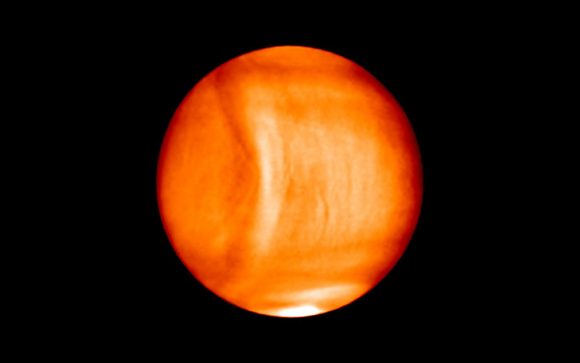
As work on nanosatellites and cubesats continues, they may play a larger role at Venus, and shift the timelines. NASA wants to include these small satellites on every launch where there is a few kilograms of excess capacity. A group of these nanosatellites could form a network of seismic sensors much more easily and much sooner than an established network of surface sensors. A network of nanosatellites could also serve as a communications relay for other missions.
Venus doesn’t generate a lot of buzz these days. The discovery of Earth-like worlds in distant solar systems generates headline after headline. And the always popular search for life is centered on Mars, and the icy/sub-surface moons of our Solar System’s gas giants. But Venus is still a tantalizing target, and understanding Venus’ evolution will help us understand what we’re seeing in distant solar systems.

